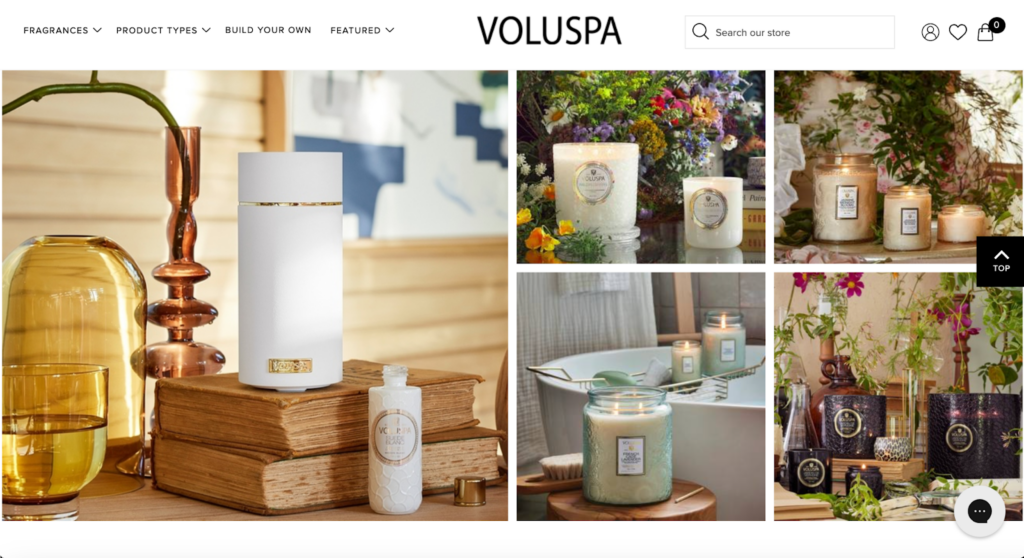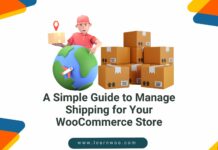With over four million merchants selling their products on Shopify globally, it isn’t as simple as setting up your digital storefront and watching the sales come flying in.
Businesses need to be clever and consider ways they can stand out from competitors, all whilst increasing those fundamentally important sales conversions.
The best way to do this? By creating effective product pages that attract customers and make it super simple and easy to make a purchase.
So without further ado, let’s take a look at some of our top tips to help you maximize the earning potential of your Shopify store.
Designing an effective product page
Layout and structure
Consistent branding
Keep your brand’s logo variations to a minimum, and place them in the same location across all product pages. Color schemes should also remain consistent throughout your website, and try to make them visually aesthetic and complimentary to the products displayed on the page. The same goes for style and tone. It needs to compliment the product – so if your products are stylish and elegant, your brand’s tone should emphasize this.
A great way to ensure consistent branding across your product pages is by using a web design template.
High Quality Product Images and Videos
Ever been shopping on Facebook? If so, the photos typically uploaded by sellers on its marketplace are the exact opposite of the quality that is required for the product images and videos on your Shopify store.
This?


Or this?


Don’t cut corners when it comes to photographing your products. Invest in professional photography and ensure the images not only capture your customer’s attention but like in the example above, portray your brand’s identity. Also use multiple images of your products from different angles, so the customer can ascertain exactly what they are purchasing.
And, if you want to get extra creative, you can use Photoshop Actions to further enhance high-quality images, turning them from photographs into art.
Compelling product descriptions
As well as captivating your customers through imagery, you must also convince them through words. The last thing they want to read is a vague, dull product description. Get right to the point with your product’s key features, and compellingly explain to them the benefits of buying this product from you, not another competitor.
Customers are constantly asking themselves if it’s worth making a purchase, and product descriptions are your chance to convince them.
Trust-building elements
The importance of building trust with your customers cannot be underestimated. With a survey conducted by Salsify back in 2022 revealed that 46% of customers would pay more for products with brands they can trust.
So how do you encourage trust in your brand?
You should start by having a detailed and clearly accessible returns policy, so customers know they can make purchases without fear of being stuck with items should they change their minds.
Offering a form of customer support is also vital to ensuring, and more importantly, maintaining trust in your brand. Whether it’s a 24/7 contact center, or support via email, the most successful brands always have a solid customer service setup. And to make it easy for customers to reach out to you, clearly signposting contact information on your website is a must.
Mobile-friendly Design
Studies show that at least 79% of smartphone users bought a product online using their mobile device in the last 6 months.
So when creating product pages on Shopify, be sure to make full use of the eCommerce platform’s mobile theme editor, which allows you to customize your website using your mobile device. This allows you to see first-hand what it looks like to your customers – who will be expecting a responsive layout, fast load times, and mobile-friendly images and videos.
Writing Effective Product Descriptions
Writing for Your Target Audience
Behind every great brand is a personality that resonates with its customers.
So in order to encourage consumers to buy your products, you need to speak ‘their language’. Thorough market research is a must in order to develop a buyer persona. Once you’ve got a solid understanding of your customer base, address their pain points throughout your product descriptions.
If for example you are selling protein-based products for gym fanatics, mention key features of your product that appeal to them, such as your products being low-calorie or fat-free.
Always aim to answer the following questions in your product descriptions:
- What problems does my product solve?
- What do my customers gain from the product?
- What makes the product better than the competition?
Key elements of a product description
In order to create a conversion-increasing product description, you’ll need the following:
- Headline – keep this simple and straightforward. State exactly what the product is.
- Key features – writing a clear, humorous, and engaging summary of the key features of your product is paramount to make sure it sells. Focus on the USPs of your product, instead of producing a never-ending list of features that are already obvious to the customer.
- Benefits – now more than ever consumers are being selective about the purchases they make. You must write confidently and persuasively about how buying this product from you will directly benefit them.
- Social proof – customers will be more convinced to buy from you if customer reviews are clearly displayed on your product pages. Also showcasing any type of certification you’ve received from an authoritative figure in your industry can help improve sales.
- Call to action (CTA) – without a persuasive CTA, all of the above is going to be for nothing. Subtly inspiring your customers to make the purchase once they’ve read the product description is the final step to converting that sale. Don’t be too salesy however, as this type of language can put potential customers off.


Avoiding Common Mistakes
Although there are lots of right ways to write an effective product description, there are certainly plenty of wrong ways to do it too. Always try to avoid the following:
- Being too technical: your product pages are there to showcase your product’s features and benefits, not to explain thoroughly the process by which the atoms in each ingredient combine together to make a bar of soap.
- Not providing enough information: on the flip side, if you are too vague and non-descriptive, how can a customer make an informed decision about why they should buy your product?
- Being too salesy: nobody likes to have a product shoved down their throat (literally and figuratively) so avoid salesy language like ‘BUY NOW’.
Adding social proof
Why social proof is important
Many psychologists argue that humans are similar to sheep in the way that we follow each other blindly/around.
Social proof reaffirms this and is the concept that people are psychologically convinced to do (or buy) something as a result of the influence of others who are doing the same.
This is why it is vital that you add some form of social proof to your product pages, as it builds trust in your brand. Not only this but your product’s credibility is increased if there are genuine customer reviews talking candidly about your products.
And, in a time when consumers are being more cautious and conservative with their spending habits, it is useful to provide your customers with reassurance that your product is reliable and legitimate through the form of social proof.
Types of social proof to include:
- Customer reviews and ratings
- Testimonials
- Endorsements
- Trust badges


Optimizing for SEO
According to stats revealed by SEO experts Ahrefs, 68% of online experiences begin with a search engine.
So neglecting the SEO side of your product pages could have a seriously negative impact on the number of sales your business generates.
This is because optimizing the SEO on your website vastly improves your search rankings on engines like Google. And as you are competing with an estimated 12 to 24 million other eCommerce websites around the world, it is pretty important that you try and climb as high as you can up those search results. But how do you do this?
Key Elements of SEO
There are a number of SEO elements that you’ll need to optimize in order to gain more customers. These include:
- Title tags: this is a code tag that gives your web page a title. And is what appears in the SERPs (search engine results pages). It is vital that you optimize and test title tags, as they play an important role in organic ranking.
- Meta descriptions: this is the short description you find underneath the title tag, that gives users a brief summary of what content is on a particular page. This should be creative and engaging.
- Image alt tags: this is the text provided alongside images, which is used by search engines (as the user searches with text). Applying images to alt tags such as product photos can positively impact an eCommerce store’s search engine rankings.
- Keyword research: Using applications like SemRush to conduct keyword research is important to improving the search engine ranking of your product page. As you’ll be able to identify the right keywords to use.
- Internal linking: this involves creating links to other pages of your own website. It not only improves your product page results on the SERPs, but also increases the chances of customers staying on your website for longer, and making multiple purchases.
Conclusion
By implementing the above tips, your Shopify store’s sales should begin to increase over time. But remember in the world of eCommerce it is a marathon, not a sprint.
Be sure to invest time and effort in optimizing your product pages, particularly focusing on testing different visual and written elements. And ensure your call-to-action prompts are clear, persuasive, and not salesy, as after all, the name of the game is to increase conversions.











